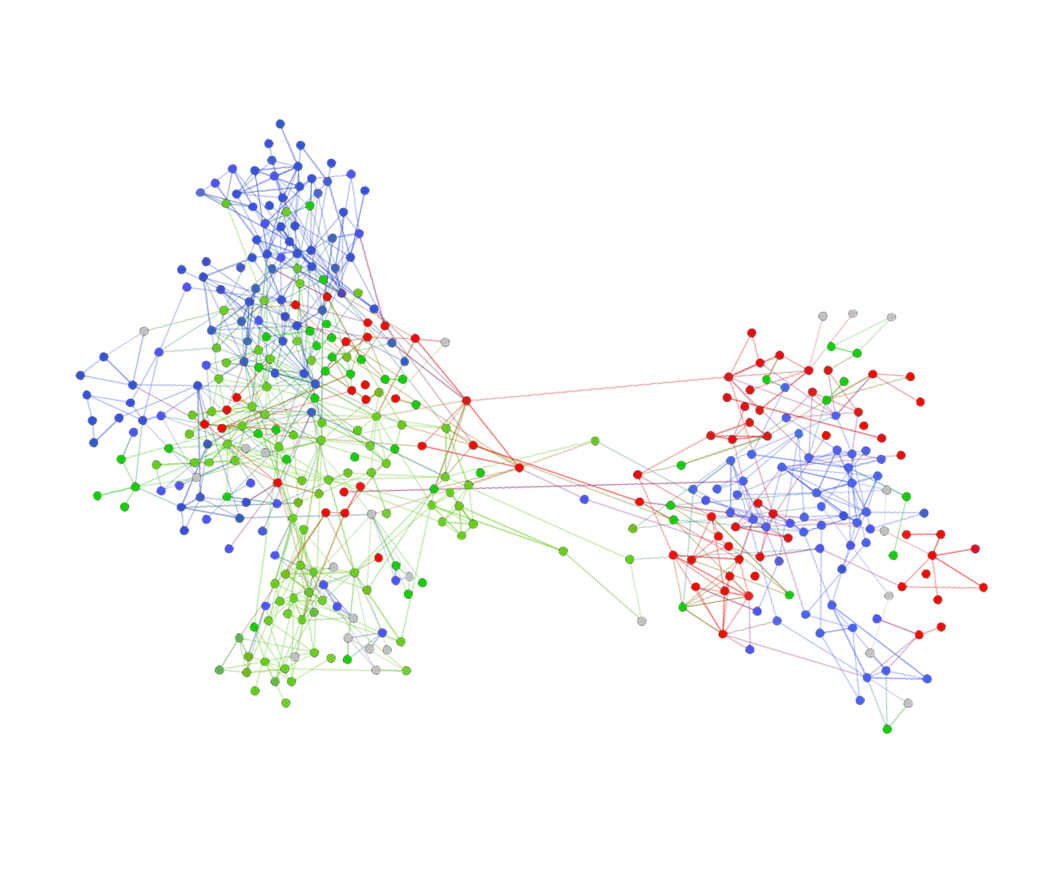A network approach: Upgrading the traditional organizational culture model
- 5 Min Read
Traditional approaches for assessing and understanding organizational culture, such as surveys and ethnographic methods, have limitations in capturing the nuances and dynamics of a connected organization. A new, network approach is now needed to dispel traditional cultural myths and drive organizational culture.
- Author: Michael Arena
- Date published: Apr 4, 2023
- Categories


We all know that organizational culture is critical to business success. It represents the genetic makeup of a company; providing the unique blend of values, beliefs, and behaviors that make a workplace tick. Culture drives the way an organization does things. You feel it the moment you walk through the door. A strong, positive culture can help drive innovation, collaboration, and engagement.
Meanwhile, a weak or toxic culture can lead to disengagement, burnout, and high turnover. As a result, understanding and actively managing organizational culture is essential for any organization that seeks to thrive and remain competitive in today’s dynamic business environment.
Traditional approach
However, traditional approaches for assessing and understanding organizational culture, such as surveys and ethnographic methods, have limitations in capturing the nuances and dynamics of a connected organization. Surveys tend to focus on the factors common to the entire organization and its culture and are blind to the dynamics of how culture spreads through an organization. Ethnographic methods involve deep and extensive interviews to explore how values guide behaviors and decision-making, but they also tend to be limited to capturing the perspectives of a small sample of individuals and may not reflect the diversity of experiences across an organization. Neither approach fully capture the dynamics of culture in organizational networks.
A network approach
A network approach, on the other hand, recognizes that an organization’s culture embeds itself in the informal connections between employees and that these connections are constantly evolving. By analyzing these connections using network assessments, organizations can identify critical relationships and subcultures within an organization, as well as the key influencers who drive cultural norms and behaviors. Additionally, a network approach can identify potential roadblocks and resistance to change, enabling leaders to proactively address these issues.
By deploying a network approach, organizations can overcome some commonly held yet inaccurate or oversimplified cultural beliefs or assumptions. Network assessments provide greater precision of actual patterns of communication and social connections among people in the organization. These network realities can affect how ideas and values are transmitted and adopted. They can be used to drive cultural change. Here are five network realities that contradict cultural myths within organizations.
Cultural myth: Every organization has a single culture, with common norms and behaviors
Network reality: Organizations have multiple cultural subnetworks. Each sub-network thinks and behaves in its own distinct way, with its own priorities and values. The hot spots and connection points among cultural subnetworks can represent valuable avenues for enacting culture change.
For example, consider the organization in Figure 1. below of just over 500 individuals. The larger group is a core sales team, while the slightly smaller group represents the marketing department. When we map the network with the individual strength behaviors from a 360 review (represented by the blue, red, and green nodes), we can see a distinct sub-network of behaviors.
Indeed, more than 90% of the network is represented by three of six possible behaviors. These three behaviors are tightly clustered with one another. The sales team to the left of the network diagram is highly customer-driven, as indicated by the strong sub-network of blue nodes. And it has a sense of urgency, as indicated by the green nodes. In contrast, the group on the right is a marketing team that has a solid mix of driving results, as indicated by the red nodes, and customer focus, as indicated by the blue nodes. Together, these sub-networks generate healthy tension that results in better outcomes for the broader business.
Cultural myth: Top executives set the tone for the culture
Network reality: Informal influencers are the real cultural leaders. Cultural ideas circulate through informal interactions among peers, and people deep in the organization who connect with many others tend to be the most critical organizational influencers. Cultivating these influencers is far more effective and efficient than promoting change directly from the top.
Cultural Myth: New cultural norms and behaviors spread at a uniform pace
Network Reality: Organizations propagate and adopt different values propagate at different rates. Some are picked up quickly, while others lag behind. And there are always outliers: employees who adapt to change well ahead of their peers. With awareness of these differences, leaders can more effectively drive the adoption of cultural priorities and behaviors.
Cultural myth: Tension and disagreement over cultural norms and behaviors are disruptive
Network reality: Cultural tension can be productive if managed well. It is important to recognize and work with the tensions that can arise across cultural subnetworks that have divergent priorities and behaviors. A diagnosis of tensions in the network, such as standoffs, strategic differences, and latent problems can lead to new interventions that bring employees together in pursuit of common goals.
Cultural myth: Culture change occurs through cognitive engagement
Network reality: Emotional engagement heavily influences culture. Conversations about cultural priorities and behaviors are inevitably full of passion. People’s past experiences and their feelings about them deeply inform how these conversations play out. As a result, cultural values flow most effectively through emotional ties. For instance, those characterized by interpersonal trust, a sense of common purpose, and collective enthusiasm. A network-based initiative can tap into these sources of inspiration and help to reduce resistance.
If an organization fully embraces the network realities as a way of shaping organizational culture, it can benefit from a more nuanced understanding of how cultural values, beliefs, and behaviors can spread. It can also determine the key influencers within the network. Leaders can leverage these influencers and target cultural subnetworks to drive cultural change more effectively and efficiently. This leads to increased employee engagement, productivity, and better business results. Additionally, by adapting and refining their approach based on feedback and data, organizations can continuously improve their efforts to shape the organizational culture.
________________
Michael Arena is the author of a best-selling book, Adaptive Space: How GM and Other Companies are Positively Disrupting Themselves and Transforming into Agile Organizations. He is the former Chief Talent Officer for General Motors Corporation.










